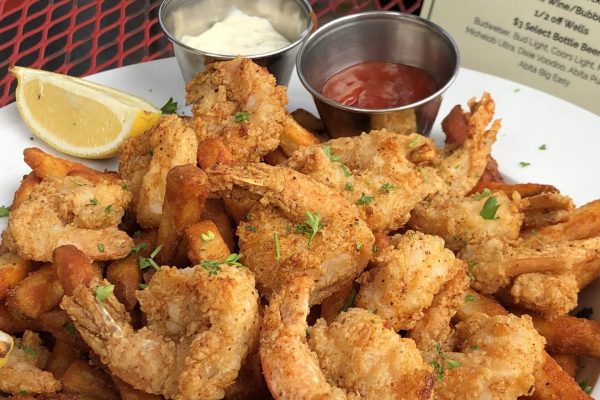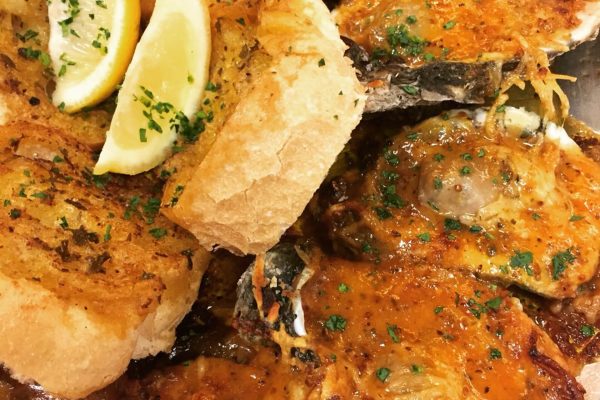New Orleans is famous for its breakfasts, which run extensive southern-style cajun and Creole selections. Creole dishes served in New Orleans restaurants to a simple but satisfying morning snack of beignets and café au lait or a link of hot boudin.
When we think of breakfast today, eggs; meats such as ham, bacon, and sausage; grits; breads in the form of biscuits, pancakes, waffles, muffins, and toast; and fruit or juices come immediately to mind. But judging from Louisiana cookbooks and menus of more than 100 years ago, breakfast menus then were much more freewheeling and expansive.
The most famous breakfast items in New Orleans include omelets, to be sure, but beignets, oysters, fish, stuffed tomatoes, shrimp & grits, jambalaya, red bean & rice, and a variety of other dishes appeared throughout the week.
Or take the weekly breakfast menus suggested in The Picayune’s Creole Cook Book, published at the turn of the 20th century. The menus, which varied from day to day, included some egg dishes, pancakes, waffles, and the like, but there was almost always some type of fish or seafood preparation. Steak, chicken, and various game birds also made regular appearances.
The closest most of us come these days to the elaborate items on early-20th-century menus is the popular dish of grillades and grits — thin slices of veal, beef, or pork cooked in a sauce redolent of tomatoes, peppers, onions, and garlic, served over grits. The renowned and richly sauced New Orleans egg dishes — such as eggs Sardou and eggs Hussarde — are complicated but not impossible to pull off in the home kitchen –– if you have the time and patience to make all the sauces and constituent elements that go into the final dish. For the most part, those dishes are probably best left to restaurant chefs who have a large staff at their command.
Pain perdu (literally “lost bread”), so named because it is made of day-old French bread that would otherwise be “lost,” is what people in other parts of the country call French toast. It is a simple dish to prepare and one that is always popular. It’s particularly good, I think, dusted with powdered sugar and served with bacon, smoked sausage, or broiled boudin patties. Early recipes often called for the addition of brandy and orange flower water to the egg and milk mixture. In addition to its more familiar name, pain perdu sometimes appeared in old Louisiana cookbooks as “egg toast,” “Spanish toast” or “poor knight.” Recipes usually call for frying it in lard.
Waffles, pancakes, biscuits, beignets, and calas (rice fritters) have a long history in our cuisine. In addition to wheat flour, cornmeal (often called “Indian meal” in early recipes), rice, grits, hominy, and sweet potatoes show up as ingredients in old recipes, and buttermilk is often the liquid of choice. Any breakfast bread needs something sweet to complement it. Our local cane syrup, mayhaw jelly, and fig preserves fit the bill nicely, as do Louisiana strawberries, blueberries, and blackberries, either made into jams and jellies or served fresh with powdered sugar.
Many do not consider breakfast complete without a dish of grits, whether cooked plain or with cheese, baked into a kind of soufflé or fried. For the most part, white grits are the standard, but yellow grits do have their devotees. In South Louisiana, leftover rice sometimes takes the place of grits, either eaten as a cold cereal with sugar and milk or scrambled with eggs.
Why It’s Creole Cuisine
The Creoles are descendants of the settlers in colonial Louisiana, especially New Orleans. Before Louisiana became a part of the United States in 1803, it was colonized for more than a century, first by France and then by Spain. The Creoles were the American-born offspring of these European settlers. Some Creoles are people of mixed race who also have West African and Native American ancestry. The Creoles, most of whom originally spoke a dialect of French, created a sophisticated and cosmopolitan society in colonial New Orleans.
Creole cuisine is a fusion, unique to the New Orleans area, of French, Spanish, West African, and Native American cuisine. It was also influenced by later immigrants from Germany, Italy, and other locations. Like French food, it sometimes makes use of rich sauces and complex preparation techniques. Creole dishes often include onions, bell peppers, celery, tomatoes, and okra.
Where Cajun Food is Coming From
The Cajuns are descendants of the Acadians, French-Canadian colonists who were expelled from the Maritimes by the British. Some of the Acadians settled in rural areas of southern Louisiana in the 1760s and 1770s. The Cajuns spoke their own dialect of French. Some intermarried with other peoples, and so modern Cajuns have some non-Acadian ancestry.
Cajun cuisine is also based partly on French cuisine and also makes use of local ingredients such as onions, bell peppers, and celery. It tends to be hearty, rustic fare, complex in flavor but easier to prepare. Compared to Creole cuisine it uses less fish and more shellfish, pork, and game. Cajun food, while not always spicy, is known for its unique use of many seasonings, including garlic, hot peppers.


